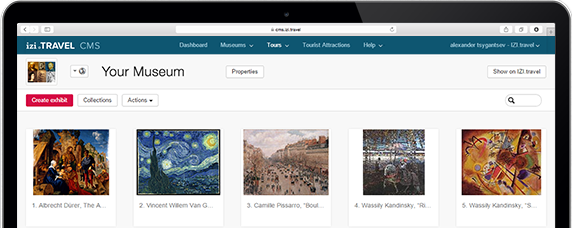音频游览 Dining room
- 下载的应用程序!
- iOS
- Android
- Windows Phone
The exhibits in this room focus on the years when Mendeleev studied at the Main Pedagogical Institute in St. Petersburg, and the beginning of his academic career.
In 1850 Dmitri came to St Petersburg with his mother and entered the Main Pedagogical Institute, the science department of the physico-mathematical faculty. The institute was situated in the building of twelve collegium together with the State University. It functioned as the boarding school, so all the professors and students lived on the territory of the institute as well.
Here young Mendeleev met outstanding russian scientists like Ostrogradsky, Lenc, Kutorga, Brandt and Voskresensky. During his study at the institute Dmitri was interested at physics, mathematics, biology and mineralogy. He also gained the experience in experimental work.
Mendeleev graduated from the institute with honour in 1855 and in 1859 he was sent to a business trip to the university in Heidelberg in order to improve and develop his professional skills. There he worked in the laboratory of a famous german scientist Bunsen, but not very long. Later he organised his own small laboratory in the apartment he ranted and started investigating capillary action. Those experiments led him to further development of his ideas concerning physical chemistry. For example he formulated the concept of the critical point of temperature for liquids.
In September 1860 Mendeleev took part in Karlsruhe Congress (an international meeting of chemists) where the basic chemical definitions were formulated.
He returned to St. Petersburg at the beginning of 1861 and published his first textbook. That was actually the first Russian textbook on Organic Chemistry. The chemical community met the book very well. Mendeleev was awarded very prestigious Demidov Prize by Russian Imperial Academy of Science. Some years later Mendeleev wrote a textbook on inorganic chemistry. It was called “Principles of Chemistry”.
He was writing his books standing at the bureau. And working at it he formulated the Periodic Law and made the first sketch of the Periodic Table.
That time there were 63 then-known and well-studied elements. Mendeleev wrote on the cards the name of the element, its atomic weight, density and other properties. Then he was moving them around the bureau trying to see the logical system. There were blank spaces for some then-unknown elements. Mendeleev predicted 3 discoveries of new chemical elements. It was a great success that those elements were discovered during Mendeleev’s lifetime.
游览停留
-
Dmitri Mendeleev and the Main Pedagogical Institute
-
Facsimile copies of notes taken by Dmitri Mendeleev and title-paper of his candidate thesis
-
Young Russian research interns at Heidelberg University
-
Studying the phenomenon capillarity in Heidelberg
-
Photocopies of title page of Dmitri Mendeleev textbook "Organic Chemistry"
-
Dmitri Mendeleev’s standing desk
-
Replica of Dmitri Mendeleev's gown
-
“Attempt at a system of elements based on their atomic weight and chemical similarity”
-
Part 2 of the 1st edition of Mendeleev’s textbook ‘The Principles of Chemistry’.
-
Photo portraits of scientists whom Mendeleev called the ‘reinforcers’ of the Periodic Law: Paul Émile Lecoq de Boisbaudran, Lars Fredrik Nilson and Clemens Winkler.
-
Bust of Dmitri Mendeleev. Ilya Ginzburg. Terracotta. 1890.
-
Portrait of Dmitri Mendeleev at his desk by Nikolai Yaroshenko Oil on canvas – 1886
-
Herbarium
评论
创建您自己的音频之旅!
使用此系统的移动导游应用是免费的


